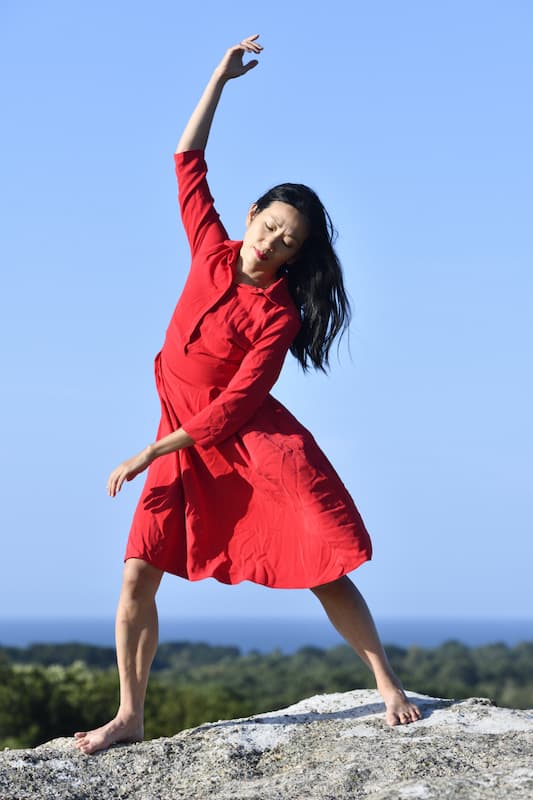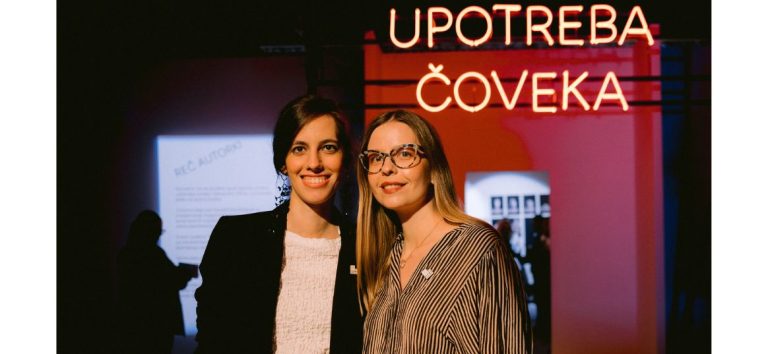International Women’s Day will have a special, artistic note within the Migration of Souls programme at the Novi Sad Fair, because the Novi Sad audience will be introduced to the world star of contemporary dance Kaori Ito, with the local world music band Bogdan Ranković and Ethnoforija. Fans of contemporary dance will have an unusual experience, so we suggest not to miss this unique performance on 8 March, starting at 8 p.m. Secure your tickets on time, by buying one, you get one for free!
Kaori Ito is an extraordinary dancer who has played ballet since she was 5 years old, and at the age of 18, she stepped into the world of professional dancing. Not only is she an experienced dancer and choreographer, but Kaori Ito is also a sociologist by profession, and she herself went through the process of migration and adoption of various cultural influences, studying both in the East and the West – in Japan and the United States. She studied modern dance at the prestigious Alvin Ailey Dance Theater, and is now coming to the European Capital of Culture to offer you an artistic experience to remember.
On the eve of her performance, between intensive preparations, we had the opportunity to talk to this artist about the performance she is preparing for the Novi Sad audience, as she also revealed her own interpretation of contemporary dance that lives, feels, and moves closer to others.

You are about to perform with the Novi Sad ensemble Bogdan Ranković & Ethnoforia as part of the European Capital of Culture ‘Migrations’ programme. What kind of performance are you preparing for the Novi Sad audience and how will you present the migration process itself?
I would like to meet local artists through improvisation. Bogdan prepared some sort of programmes with places to improvise. The improvisation is concentrated time to meet someone instinctively. It makes us meet in our pure animal form and the audience can be the witness to this beautiful exchange.
How do you view this synergy of different cultures on stage, the combination of contemporary dance and traditional Serbian music? In which manner do these two arts intertwine and how are the joint preparations for the performance going?
I am listening to this traditional music in my own way and reacting with my own dance. It is the way to expand my imagination without being influenced by what it has to be. The cultural exchange is wonderful since we can invent new ways of doing things without any taboos.
Apart from traditional music, what inspired you to create the choreography for this performance? How challenging is it to design choreography for music you may not have had contact with before? Do you rely on improvisation?
I really rely on my instinct of improvisation, and it makes me listen very carefully to the music and be spontaneous.
We will have a chance to see how your perception of art translates to stage. It can be said that dance is a language we all understand, but how do you view contemporary dance?
Contemporary means ‘present’. It means that we are dancing or seeing the dance of now. I always then try not to form the movement but let the movement comes from the body. The dance itself happens between the one dancing and the one watching. The movement makes the whole space move between people. It is sort of an invisible dialogue.
It is often said that artists know from an early age what they want to do and what they will be when they grow up. Is that the case with you, since you made your first dance steps at the age of five, and started dancing professionally at the age of 18?
I remember my mother saying to my ballet teacher, ‘Kaori found the thing that she really likes to do, so please make her continue to do it.’ It is a wonderful thing to find something that you love. It could come of course later, and it could change, but loving one thing makes us realize a lot of things through that one thing. I learned so many things through dance and body.
You started dancing in Tokyo, and at the age of 20, you moved to New York because of your studies, after which you returned to Tokyo and finished your sociology studies there. Today you live and work in France. How much have the cultural differences between the East and the West influenced the growth of your character and made you what you are today?
New York has lots of energy of living, inspiration, and possibilities but nothing is certain in the profession. Japan is a very paradoxical country where there is so much mixing between pop and traditional culture as well as seriousness and craziness. French culture is so deep and beautiful that it’s hard to change… etc. Even though there are cultural differences, we are deeply all human. This doesn’t change. When we are touched, we are touched for different reasons, but we are all touched by something. This feeling is shared universally. For example, we’re all touched by the situation between Russia and Ukraine.
How much effort and sacrifice lies behind your success?
It’s to continue doing what you believe and not letting it do down. I don’t think it is sacrificing to do what we love.
Apart from dance, what other types of art do you enjoy?
I draw a lot since I was little. I also like to record the voices of people or other sounds. I do also silkscreens. I basically like to use my hands.
Kaori Ito delivered a unique performance at the Olympic Museum during Tokio Olympic Games 2021. See the video:
Author: Marina Marić
Photo: Private archive








